Woolly designs from Shetland sheep showcased in student project
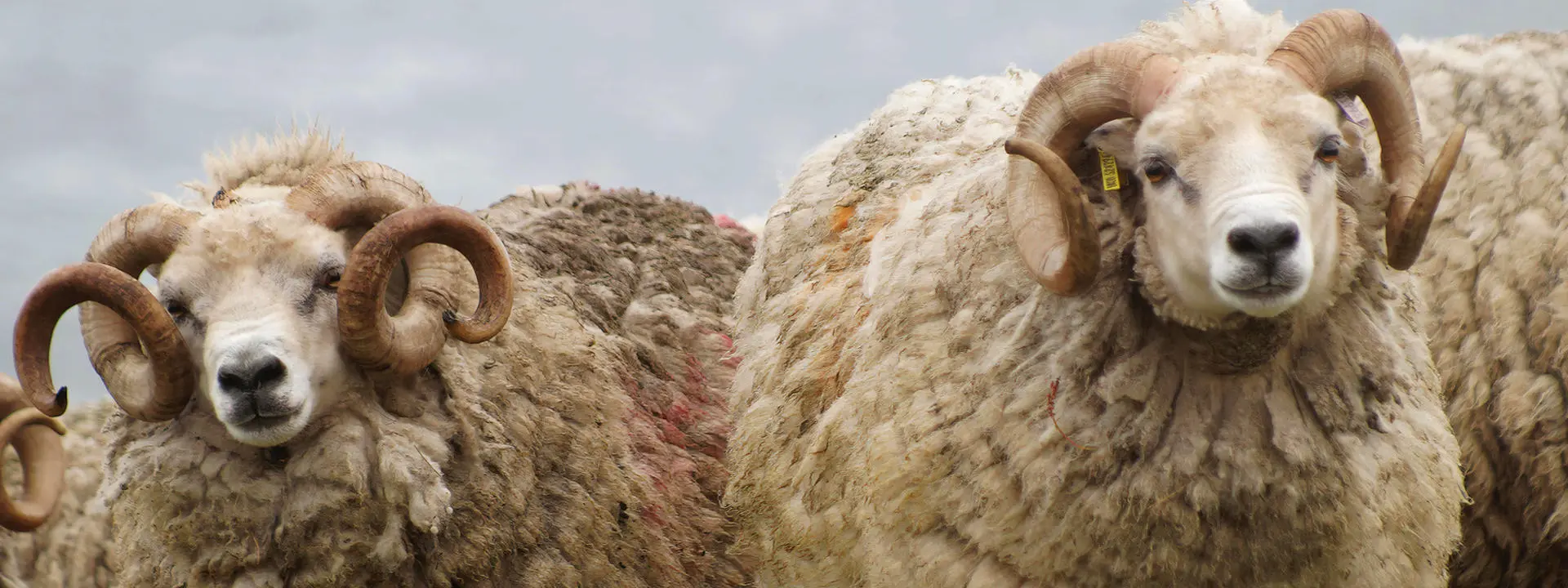
Students in the Scottish Borders have created new textile designs for products made from the wool of Shetland sheep as part of an industry project.
The project is a collaboration between Heriot-Watt University’s School of Textiles and Design in Galashiels and Jamieson & Smith Shetland Wool Brokers, based in Lerwick on the Shetland Islands.
Shetland wool is native to the Shetland Islands and comes from Shetland sheep, who graze on the islands' hills and beaches eating wild heather and seaweed.
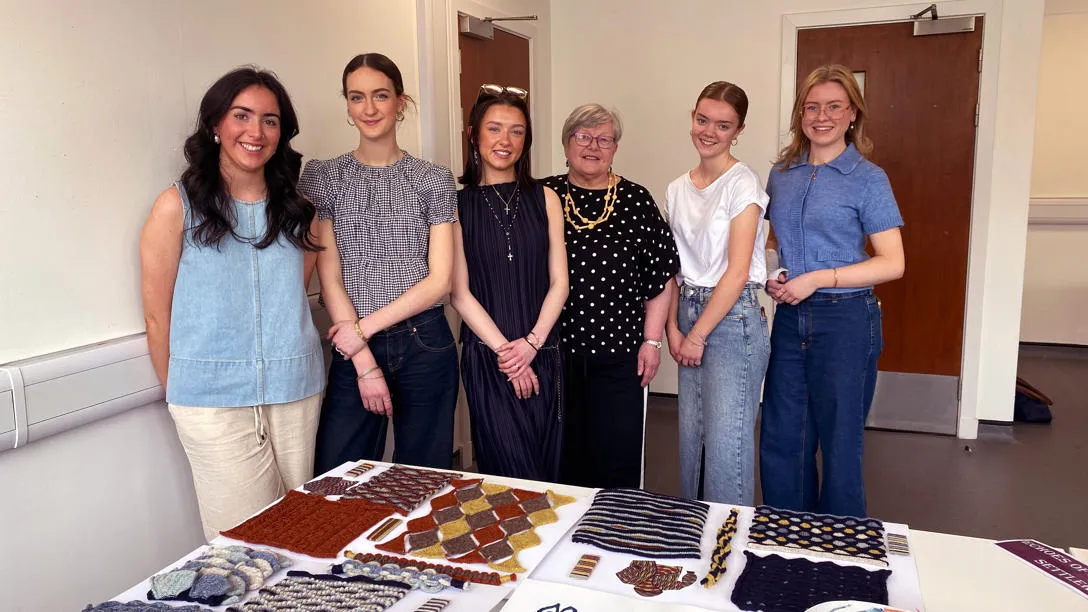
“This diet, along with the not-so-great weather, makes Shetland wool soft, strong and warm,” explains Ella Gordon, marketing manager for Jamieson & Smith. “Shetland Wool is also very diverse: it's perfect for hand-knitting both Shetland Lace and Fair Isle, as well as for knitwear manufacture and weaving.”
Jamieson & Smith buys Shetland wool from more than 700 of Shetland's crofters and farmers and transforms it into high-quality Shetland wool products including knitting and weaving yarns, knitwear, blankets and carpets.
Eighteen third year students at Heriot-Watt studying textile design for knitted, woven and printed fabrics took part in the project to give them hands-on experience of working in industry. They presented woven, knitted and printed textile designs that could be used in a wide range of interior and fashion products, including cushions, curtains, lampshades, throws, artworks, coats, suits, jumpers, dresses, scarves, shirts and blouses.
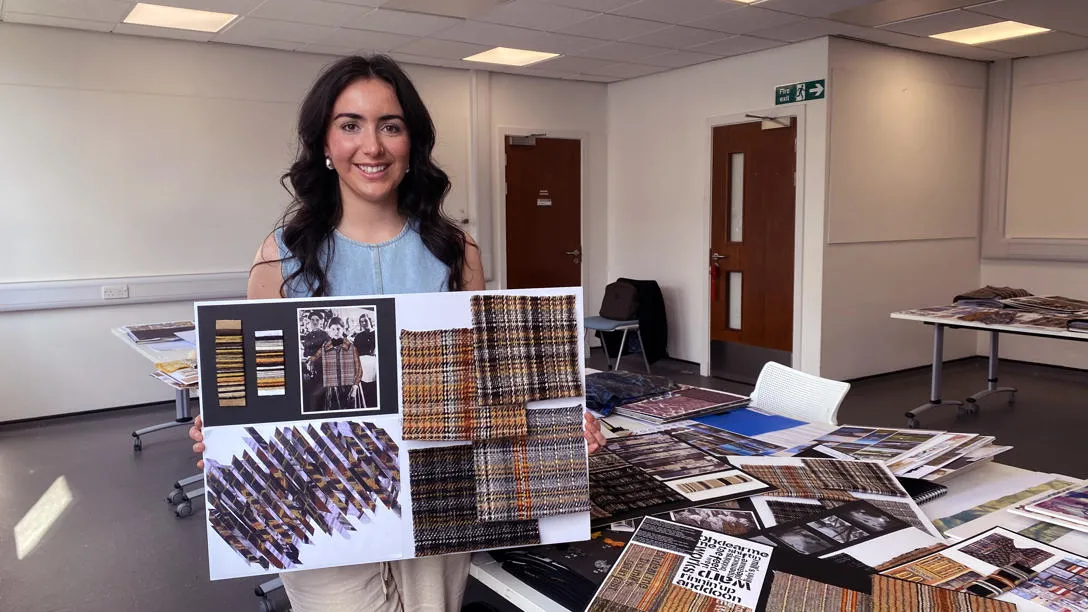
Student Megan Beattie, 20, from Dundee, was chosen as category winner for woven textiles and overall winner of the industry project for her woven woollen textile designs for women’s suiting fabric. Megan’s project was inspired by the powerful women who played key roles in both Shetland’s textile industry and Dundee’s jute industry. To develop her designs, she used themes, shapes and colours from sources including old photographs of women mill workers and lyrics from songs that would be sung in the mills.
“Women dominated the textile industry so much that Dundee was nicknamed ‘She Town’, while Shetland was known as a ‘Women’s island’,” Megan explained. “It was nice to find that link between the two communities. I feel extremely proud to be named overall winner in this project. It’s been a great opportunity to work with Shetland yarn and fantastic experience in my ambition to work in the woven textile design industry.”
Megan is one of six students who were named category winners or commended for their work across the three categories of print, knit and weave. The category winners will each receive a £100 prize from Jamieson & Smith, while the overall winner will be invited to Shetland, where it’s hoped their work will be shown in the in Shetland Museum & Archives in Lerwick during 'Shetland Wool Week' in September. This is an internationally acclaimed annual event that celebrates Britain's most northerly native sheep, the Shetland textile industry and the rural farming community on the Shetland Islands.
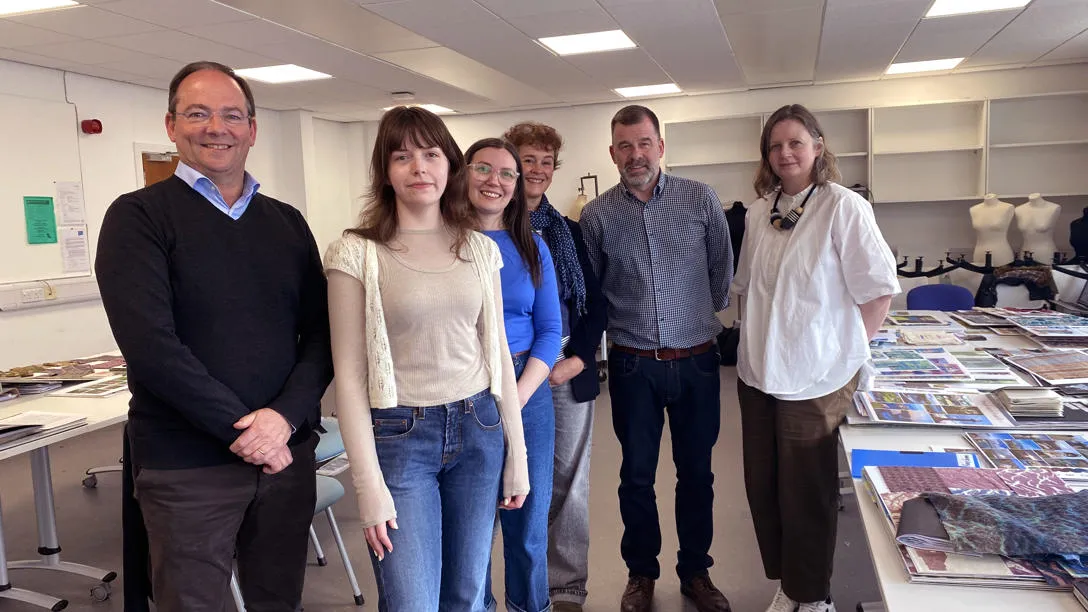
Curtis Wool Direct, based in Bradford, West Yorkshire, is one of the world’s largest wool trading and processing companies and is the parent company of Jamieson & Smith. Daniel Isbecque, Managing Director of Curtis Wool, helped to choose the winning student designs during a visit to Galashiels for the students to present their work.
He said: “We were blow away by all the students’ creativity and the work they had done. In the world of textiles, it’s very difficult to find young people who are the tomorrow of our industry – so we’re very pleased to be collaborating with Heriot-Watt University in this.”
Angela Cassidy, Assistant Professor in Knit Design at Heriot-Watt School of Textiles and Design, said the students had been really resourceful and creative in their projects. She added: “Industry projects are vital to give students real life insight to commercial considerations and challenges around design and manufacture. They help to hone our students’ skills around end uses for their designs – and how appropriate they are for the market they’re targeting. This project has also been a great opportunity to challenge established brands with fresh ideas – and will be a gem in their portfolios.”
The other students who were named a category winner or commended for their work were:
Print category winner – Grace Holden, from St Andrews in Fife, who created a textile mural and artworks inspired by the work of her grandfather and great grandfather in Lancashire’s textile industry.
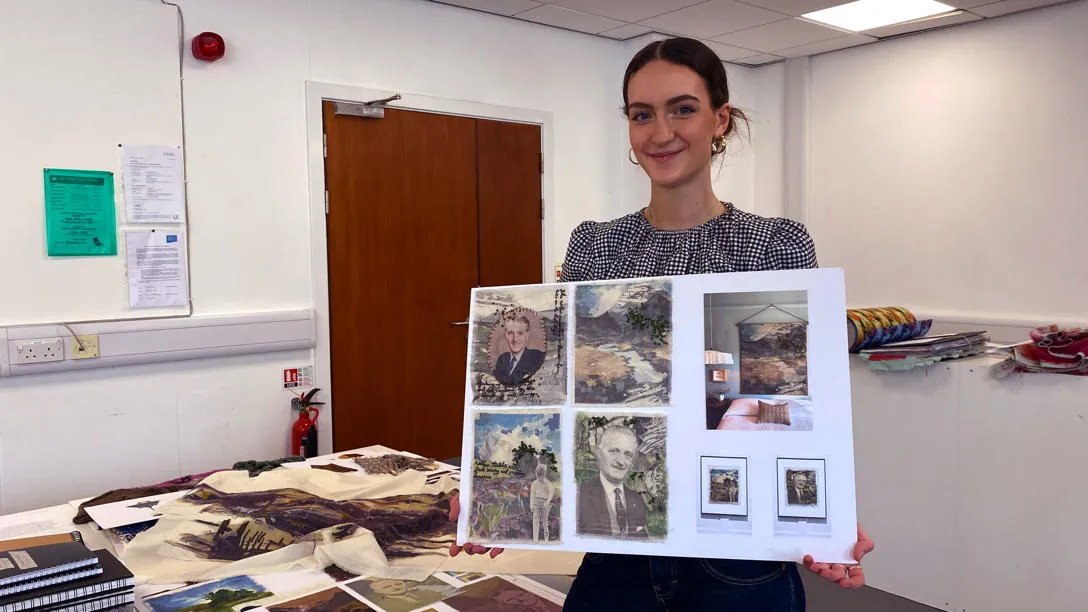
Print category commendation – Jude Malone, from Edinburgh, who used the words of a Victorian poet from Shetland to create textiles inspired by the islands’ landscapes and cliffs.
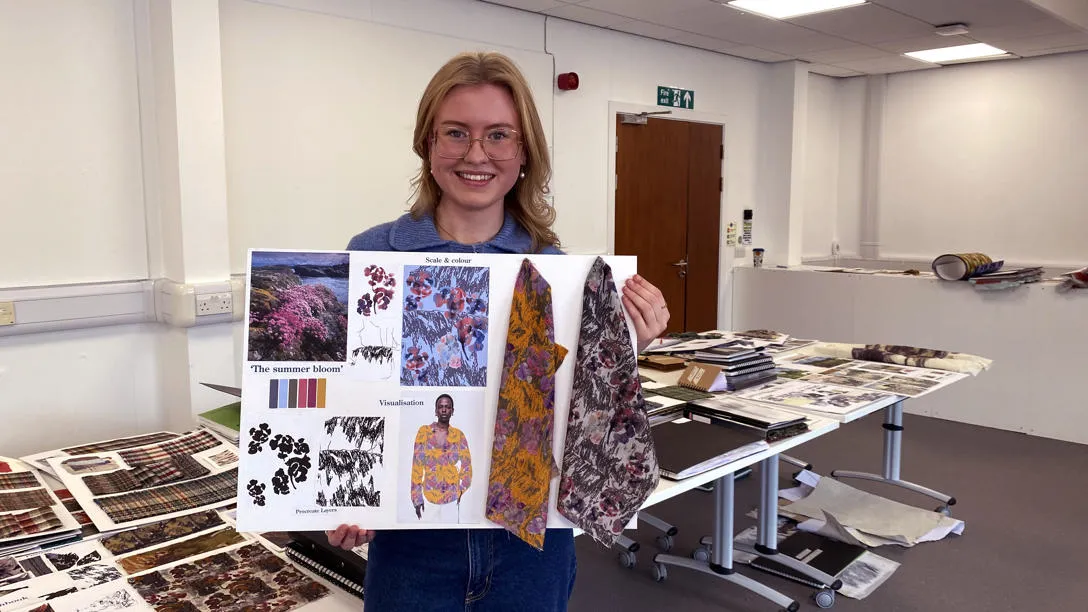
Knit category winner – Adele Gillespie, from Dunecht in Aberdeenshire, whose work, including fishing net motifs, drew links between Shetland’s fishing industry and the work of her grandparents in Moray’s fishing industry.
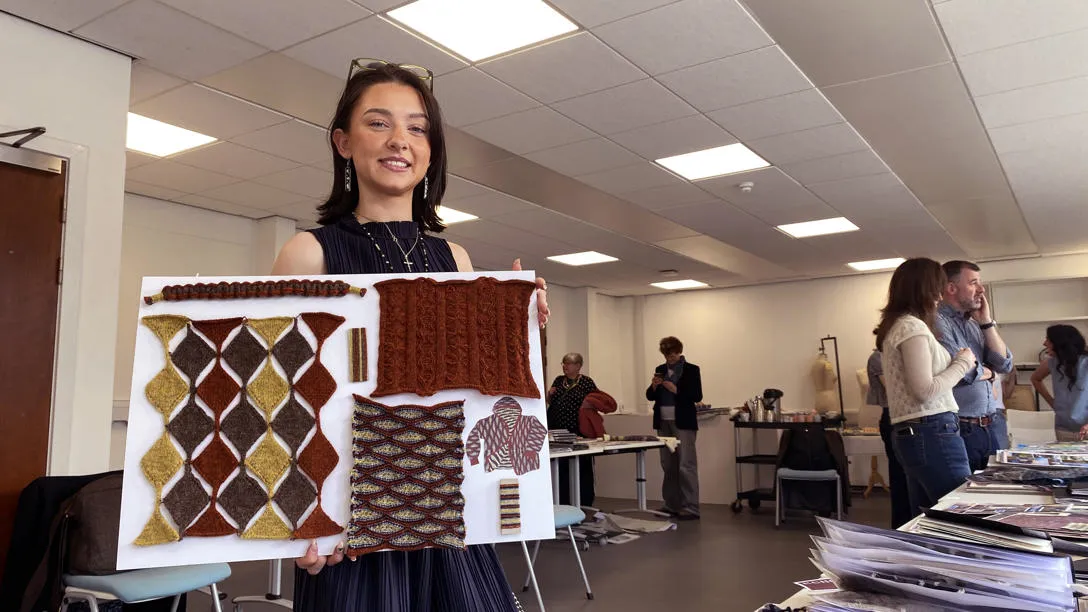
Knit category commendation – Shona Cook, from Edinburgh, whose work was inspired by nature and wildlife including otters and herons and the geometric shapes of Sanqhuar Knitting, a traditional knitting technique developed in the town of Sanquhar, Dumfriesshire.
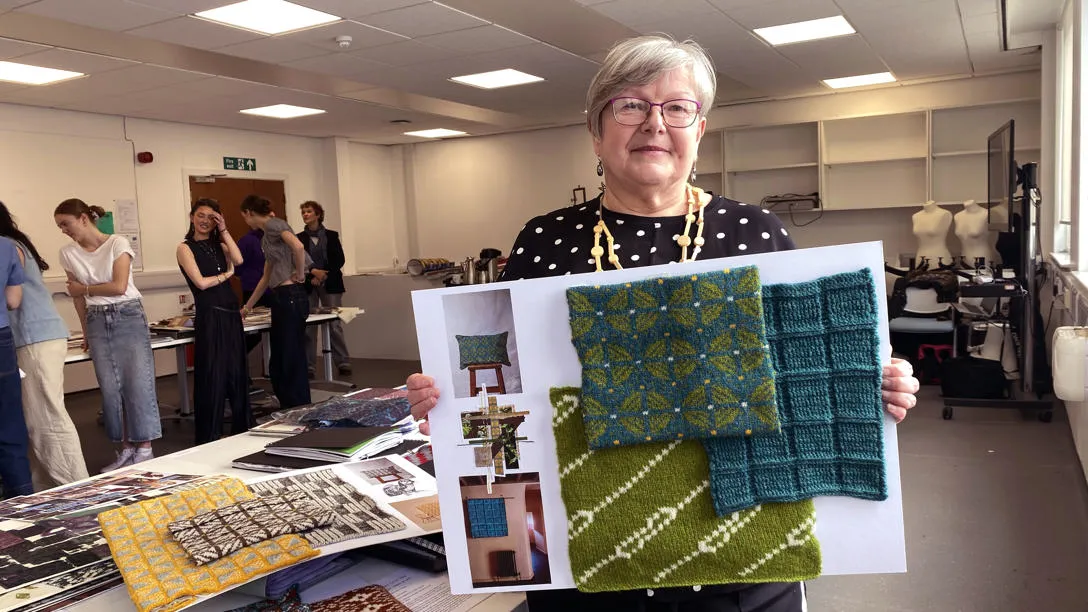
Weave category commendation – Grace Nicoll, from Aboyne in Aberdeenshire, whose designs were inspired by old Shetland tweeds and the granite pinks, heather purples and moss greens of Aberdeenshire.
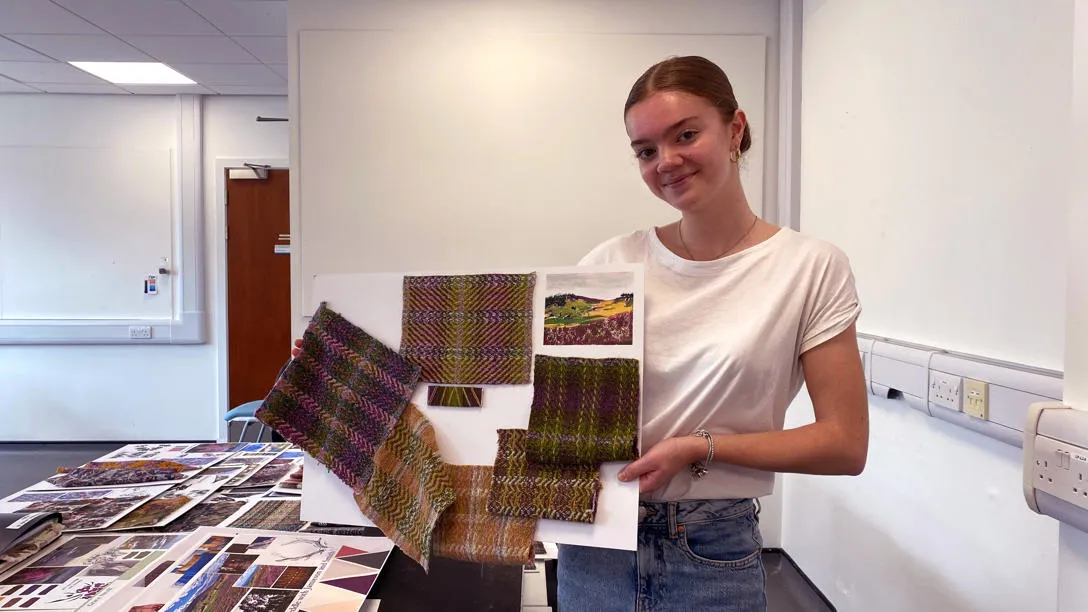
It’s hoped that a selection of student work can be exhibited at 'Tangled', a fibre festival in Galashiels that celebrates the area’s historical and cultural textile heritage. This runs from Friday 30 to Saturday 31 May 2025, when the student work will be displayed in the Great Tapestry of Scotland visitor centre on Galashiels High Street.
Jamieson & Smith provided several thousand pounds worth of woollen yarn for the Heriot-Watt industry project in nature-inspired colours including blues, greens, yellows, reds and cream, grey, biscuit and black shades. The company also supplied sheep fleece to integrate with existing fibres or spin into new yarns. Selkirk-based weavers, Lochcarron of Scotland, also supplied many metres of woollen cloth for the Print students to use as the base material for their designs.
The Heriot-Watt students are studying the University’s BA (Hons) Design for Textiles (Fashion, Interior, Art), a creative textiles course that combines theory and practice in fabric design methodology with fabric production techniques and innovation.

The other students taking part in the project presented print, weave and knit designs inspired by sources including Shetland’s landscape and history and their own communities, families and experiences. They were Amy Alexander, Erin Black, Millie Wilson, Hallie Graham, Keavy Green, Abigail Halfpenny, Graeme Hart, Lara-Maree MacGillivray, Sandra Meek, Patrycja Trocewicz, Julia Loftus and Salome Mwafula.
The industry representatives reviewing the students’ work also included Alan Thornber, Jamieson & Smith’s yarn agent.
Jamieson & Smith was founded in the 1930s by the Smith family of Berry Farm in Scalloway, on the east coast of Shetland. When the Smith family retired in 2004, the company joined with Curtis Wool Direct.
Curtis Wool was established in 1969 by two families focused on British and New Zealand wools. Curtis Wool Direct today specialises in supplying British, Norwegian, Irish, New Zealand and Real Shetland wool worldwide for end products including carpets, upholstery, bedding, clothing, knitting wool and biodegradable insulation material.
Wool is considered a highly sustainable fibre because it is biodegradable, recyclable and naturally renewable when sheep regrow their fleece.